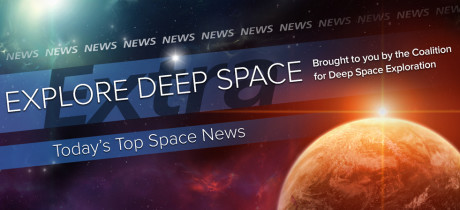In Today’s Deep Space Extra… New dates emerge for the first uncrewed and crewed test flights of NASA’s Commercial Crew Program partners, Boeing and its CST-100 Starliner and SpaceX and its Dragon 2. NASA is to announce astronaut flight crew assignments today.
Human Space Exploration
NASA unveils first commercial crew astronauts today: How to watch live
Coalition Member in the News – Boeing
Space.com (8/3): NASA will announce the first astronauts who will fly in SpaceX and Boeing spacecraft for the agency’s Commercial Crew Program. The first crewed test flights, which will use Boeing’s CST-100 Starliner and SpaceX’s Crew Dragon vehicles, are currently scheduled for 2019. The announcement will be broadcast live at 11 a.m. EDT from Johnson Space Center (JSC) in Houston, and you can watch it live HERE on Space.com, courtesy of NASA TV.
U.S. Senator Chris Coons (8/2): The Delaware lawmaker’s bill, supported by more than 40 congressional colleagues, would award four Congressional Gold Medals to two female historical figures and two who’ve passed away for their pioneering contributions to early human space exploration. Among those to be honored is Kathryn Johnson, who led calculations of the spaceflight trajectories for NASA’s first human suborbital Mercury spaceflight by Alan Shepard as well as the first orbital mission flown by John Glenn. Her life was featured in the recent popular film, Hidden Figures.
It’s official: Boeing and SpaceX crewed test flights slip to 2019
Coalition Member in the News – Boeing
Spacepolicyonline.com (8/2): NASA has posted a new schedule for the uncrewed and crewed test flights anticipated from its Commercial Crew Program partners, Boeing and the CST-100 Starliner and SpaceX and Dragon 2. The action slips from 2018 to 2019, adding to pressure on NASA to work on launch arrangements with Russia to ensure a continuous U.S. presence aboard the International Space Station.
How can NASA return to the Moon? By making everything reusable, chief says
Ars Technica (8/2): How can NASA avoid a repeat of past White House directives to return to the moon and venture further into deep space with human explorers, only to see the plans dismantled by the next administration? In a discussion with news media Thursday at NASA’s Johnson Space Center, NASA Administrator Jim Bridenstine pointed to space hardware reuse as a key. Plans to transition the agency’s human space exploration focus from low Earth orbit to deep space are to be well underway by 2025, with new private sector and international partnerships.
Space Science
The coldest place in space has been created. Next challenge, coldest place in the universe
Universe Today (8/2): The Cold Atom Laboratory, a fundamental quantum physics experiment launched recently to the International Space Station, has started to furnish eager scientists on Earth with data from particle interactions at extreme low temperatures. The experiment was developed by NASA’s Jet Propulsion Laboratory.
We need to keep looking for aliens, scientists tell Senators
Space.com (8/2): Scientists from outside NASA joined Thomas Zurbuchen, the space agency’s associate administrator for space science, in urging the U.S. Senate’s Space, Science and Competitiveness Subcommittee to support efforts to identify evidence for life beyond Earth. The testimony was presented during a hearing on Wednesday.
Other News
Air Force close to selecting next-generation launch vehicles
SpaceNews.com (8/1): U.S. Air Force plans to announce future national security launch services providers have slipped from July to August. “The Air Force wants to have at least two domestic commercial launch service providers that also meet national security space requirements, including the launch of the heaviest and most complex payloads,” according to the SpaceNews.com report.
NOAA offering ride share for small satellites
Weather Nation (8/2): NOAA’s Joint Polar Satellite System-2 weather satellite is to launch in 2022. NOAA is offering commercial small meteorology satellite operators an opportunity to propose secondary payloads to demonstrate their ability to meet agency performance requirements in ways that could reduce future costs.

